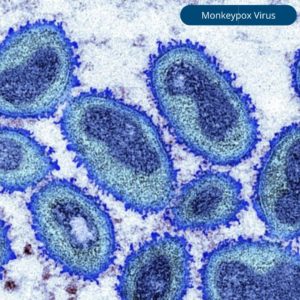As of Aug. 10, 2022, there are more than 7,000 confirmed cases of monkeypox in the United States.
Monkeypox is a rare illness caused by a virus similar to the smallpox virus. According to the Centers for Disease Control and Prevention, there are now approximately 31,800 cases worldwide in 89 countries. Thus far, there have been NO deaths from the 2022 outbreak.
Incubation period is 1-2 weeks after exposure. You are contagious when symptoms first appear.
 Early monkeypox SYMPTOMS include:
Early monkeypox SYMPTOMS include:
- Fever
- Chills
- Headache
- Muscle aches
- Swollen lymph nodes (can be in neck, groin, armpit or jaw)
A few days later symptoms include a RASH:
- Initially these are flat red bumps that turn to blisters, which can fill with pus. The rash is often painful. Rash can be in your mouth, genitals/rectum, face, arms and legs, palms and soles and torso.
- In current cases of monkeypox in the U.S., patients do not have all the symptoms and may not have swollen lymph nodes or high fever. Rash may be limited to the genitals or rectal area.
- Monkeypox is spread when you come into contact with the rash, respiratory droplets or oral fluids of an infected person, usually through intimate situations like hugging, kissing or intercourse.
- Monkeypox is usually self-limited and can last 2-4 weeks. You are contagious until the last blister has scabbed, similar to chickenpox. There are currently no FDA-approved treatments for monkeypox, although research is underway.
The best ways to prevent getting monkeypox:
- Avoid skin-to-skin contact with anyone who has monkeypox rash
- Do not hug, kiss or have intimate relations with someone infected by monkeypox
- Do not directly touch the bedding, towels or clothing of someone sick with monkeypox
- Wash your hands well with soap and water or hand sanitizer after contact
